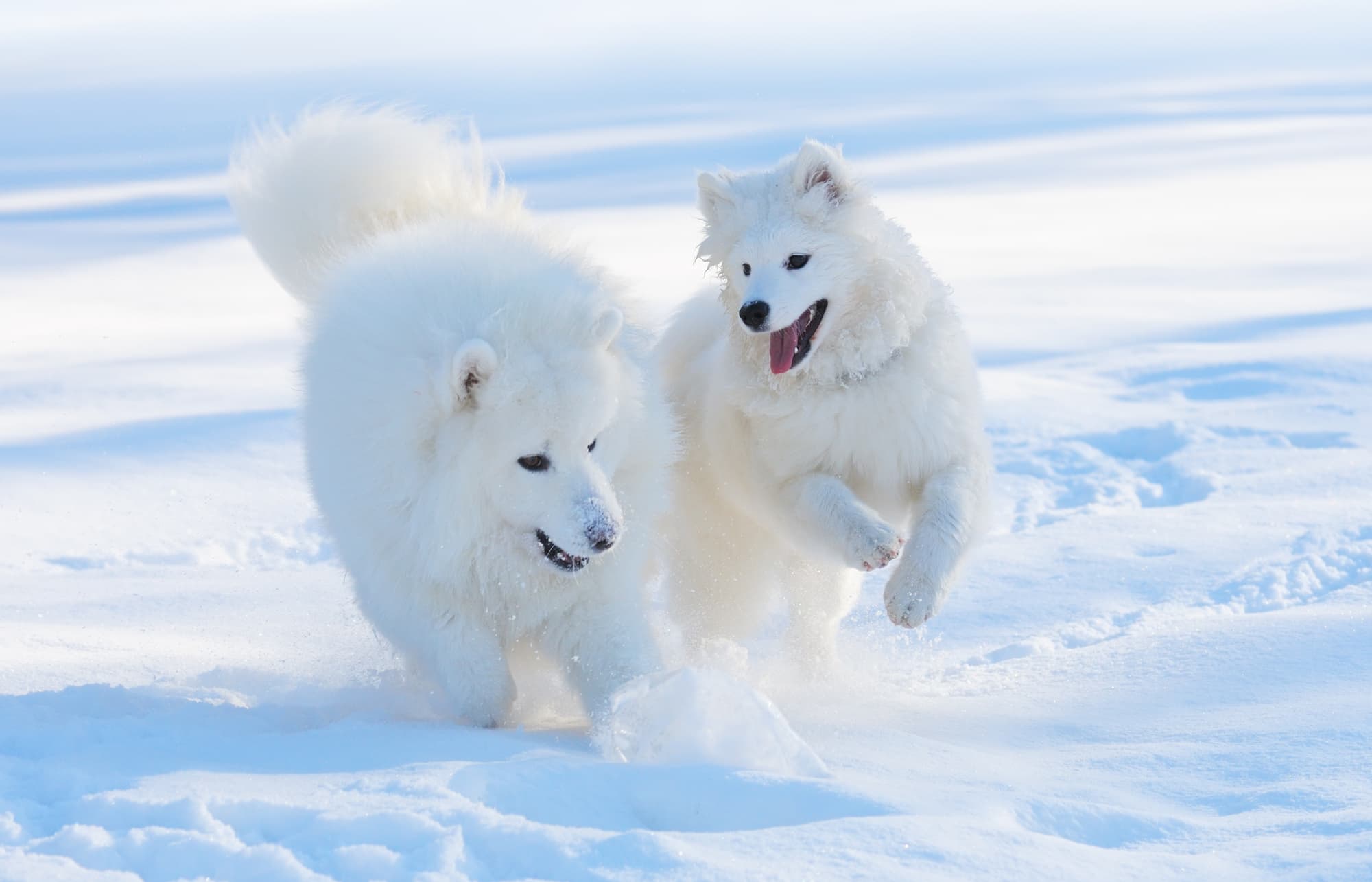The Samoyed is compact and muscular with a broad wedge-shaped head and muzzle that tapers to a black, liver, or brown nose. The corners of the lips curl up to give the characteristic “Sammie smile.” Samoyeds should have nice dark pigment around the eyes, nose, and lips despite the white coat color. A Sammie’s ears are erect and slightly rounded while the long tail is hair-covered and curls up over the dog’s back creating a distinctive silhouette. The Samoyed’s outstanding feature is its profuse double-layered coat. A soft, short undercoat is covered with harsh longer hairs that stand straight out from the body.
Sammies were bred for hard work in some of the world’s coldest regions and their beautiful coat is designed to protect them from these temperature extremes. It is a coat, however, that sheds a fair bit, especially during their twice-yearly molt. Daily brushing is an essential chore if you own a Samoyed while the ability to turn a blind eye to hairs on the sofa is a must. On the plus side, these dogs are virtually odorless. Bathing is rarely required.
In personality, Samoyeds are friendly, intelligent, and independent. As Siberian working dogs, they’re used to living in close proximity to nomad travelers, hence their love of human companionship. They’re always up for a cuddle. Leave them alone for too long and they will become unhappy dogs and nuisance barkers. Samoyeds tend to get along well with other dogs as well as people and with other pets they are raised with. They are herding dogs and may show some tendency to chase or nip. In general, they get along well with children, although they can be a little boisterous for small toddlers. On hot days, Sammies will seek out cool spots. This may include digging up your favorite flower bed.




















